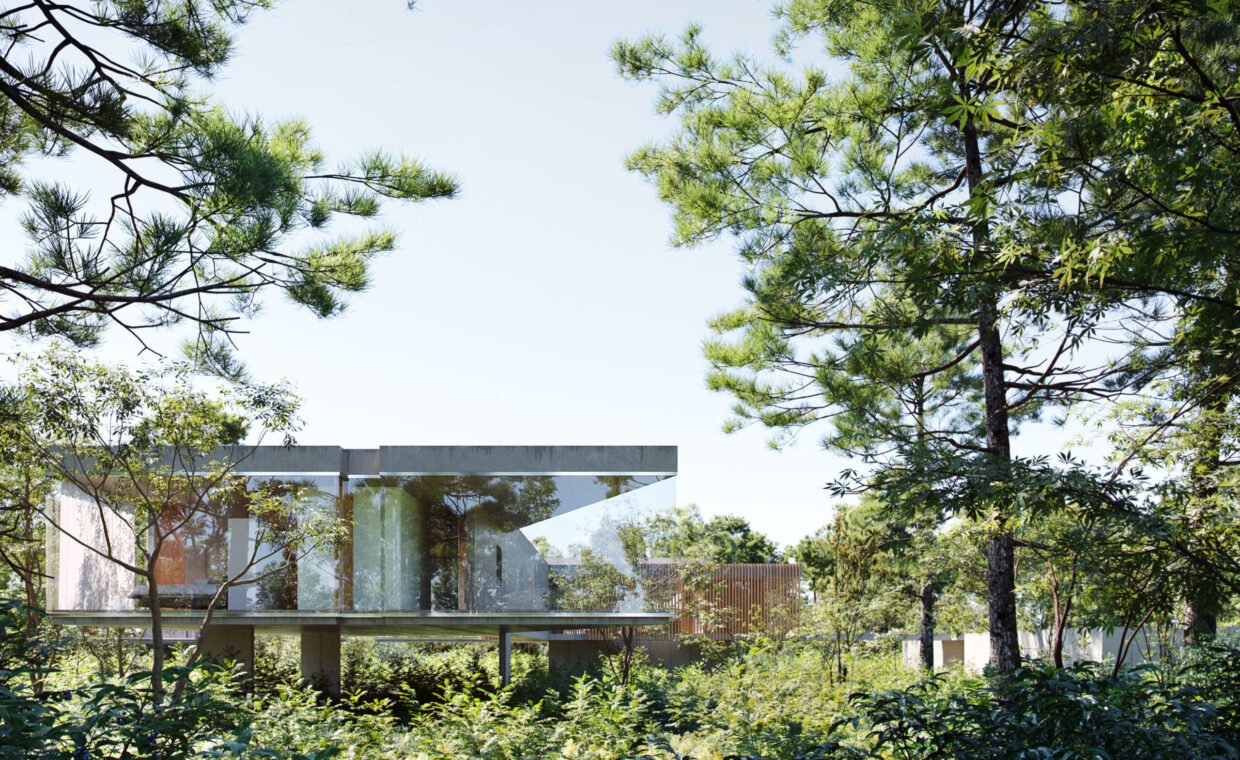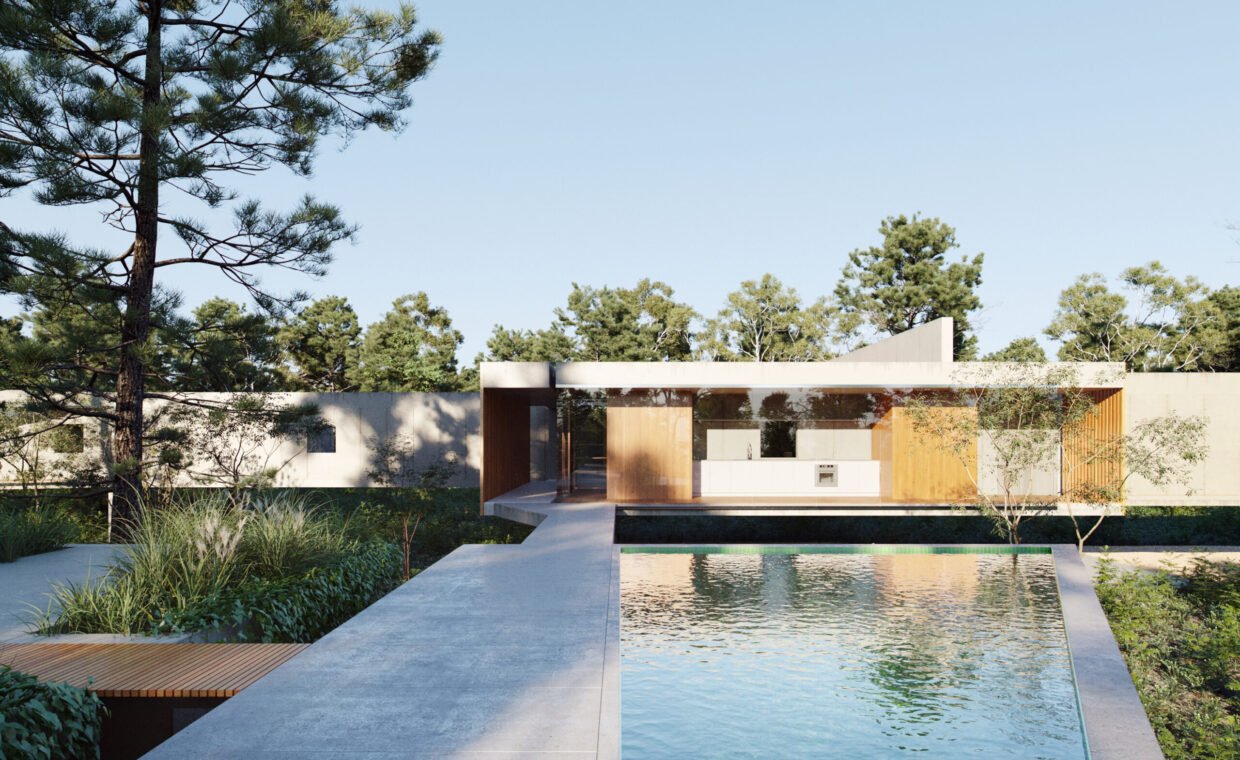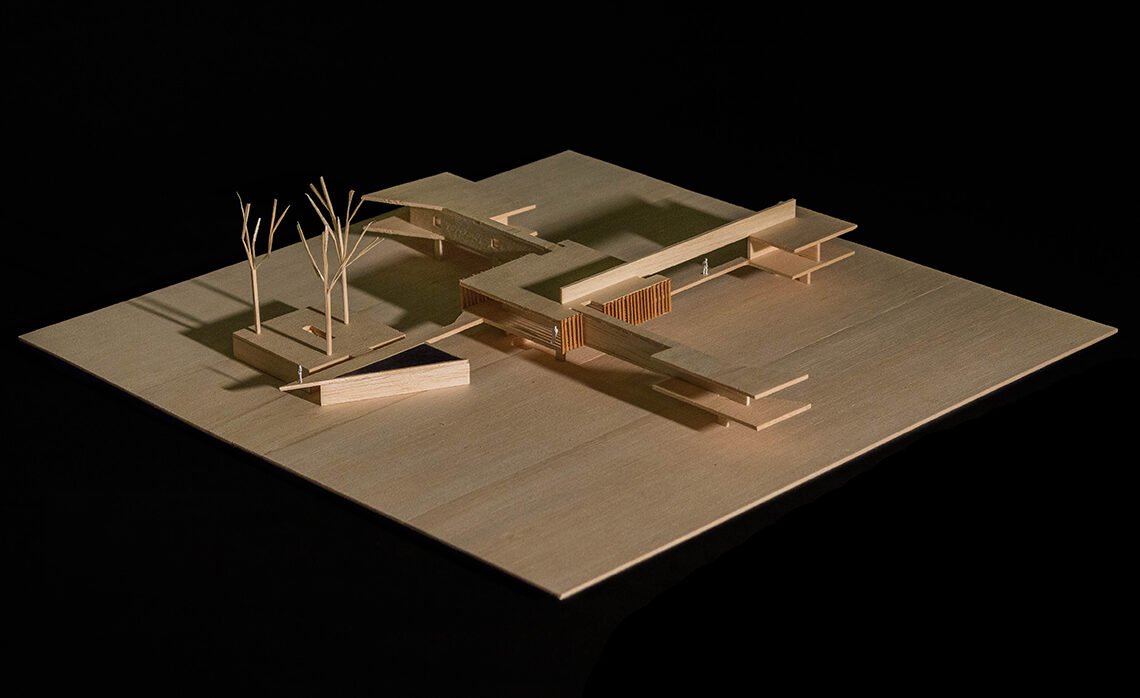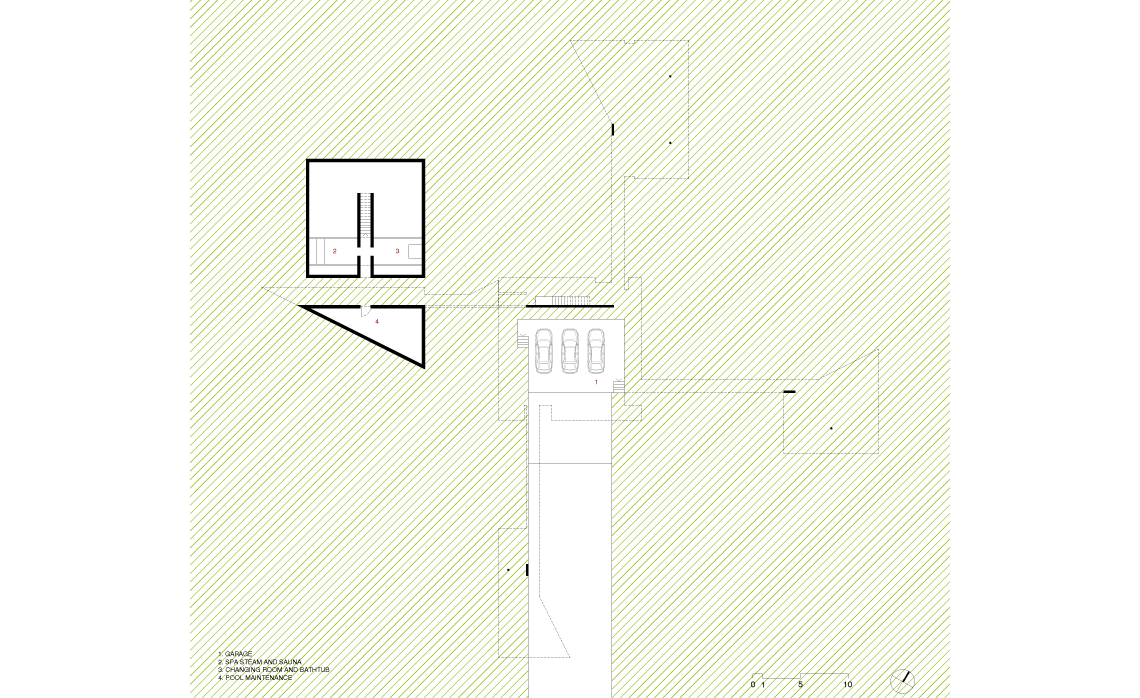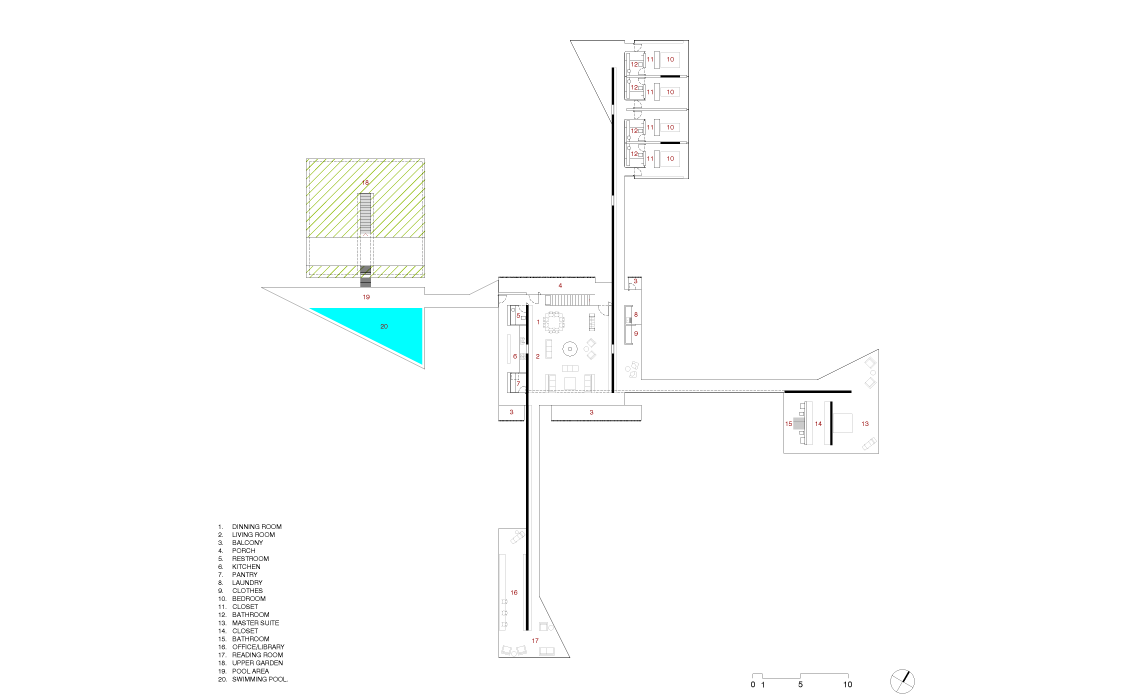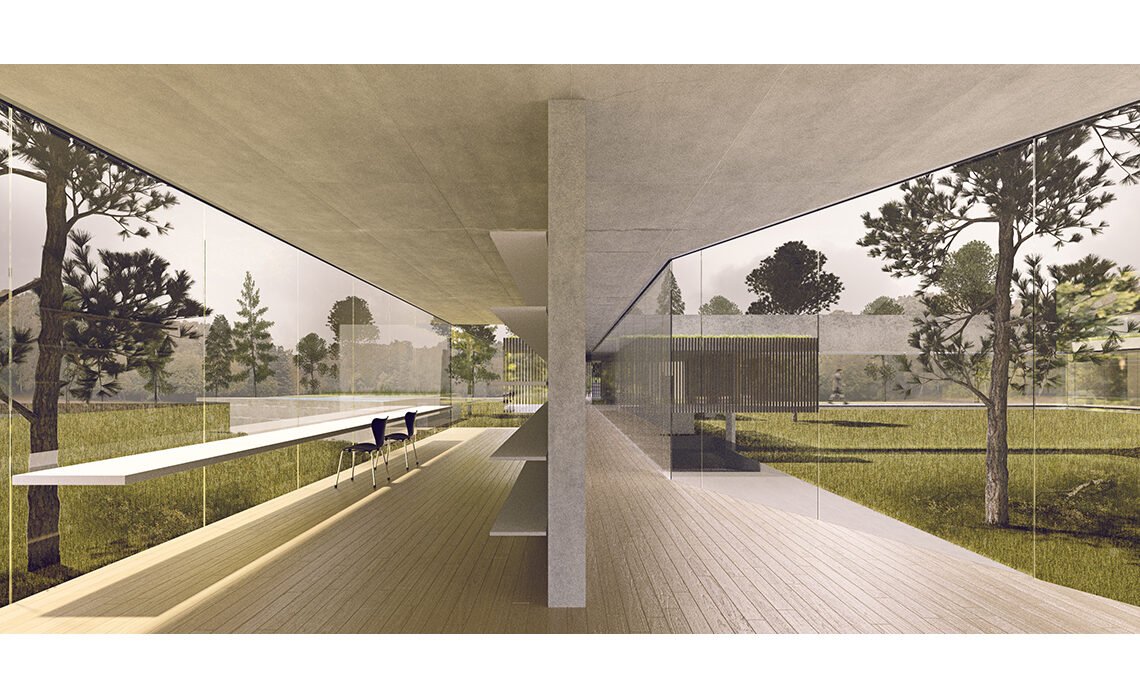House in Sagaponack
Felipe Barradas
Lucas Roca
Victor Próspero
Tatiana Ozzetti
Martha Dallari Bucci
Henrique Castro
Vitor Endo
Paula Dal Maso
STRUCTURAL SYSTEM
Reinforced concrete
MAJOR MATERIALS
Concrete, steel, glass, wood
SITE AREA
8,400 sq m
BUILDING AREA (FOOTPRINT AREA)
560 sq m
TOTAL FLOOR AREA
804 sq m
DESCRIPTION
IMaestri
In 2015, Neil Radnal, director for the IMaestri, kindly invited us to design one of the houses for Sagaponack Project. Our task was taken as to design a strategy that could accomodate any of those five sizes of house, from 280 to 560 sq m. Among them, following his request, the largest version of house in a 8,400 sq m site placed at East Woods Path, was taken to illustrate this proposition.
Long Island modern tradition
It happened that I have been in East Hampton before, in 2006, to visit the site in order to design a house in Ocean Avenue with Hook Pond Lane. Although not built, it gave me the opportunity to realize how strongly related Long Island is to the history of the modern architecture and art in United States. Gordon Bunshaft’s own house and its remarkable garden by Noguchi. Robert Motherwell’s house by Pierre Chareau. Early works by Richard Meier, by Philip Johnson. It was there where Pollock begun to display his canvas on the ground; where De Kooning, Saul Steinberg or Mark Rothko have produced some of their masterpieces.
PROPOSAL
A strategical scheme rather than a specific project
Luigi Snozzi, Celerina, and John Hejduk, Wall Houses, are precedents to be named here.
By explotating the unite of a house into separated rooms it is possible to free its size from the area it covers, as if its footprint area was made by both out and inner spaces. No matter its version 280, 350, 420, 490 or 560 sq m, their shape look very similar. It means, even a small house can face and qualify massively a much bigger site.
On the other hand, to detach the house from the ground allows to preserve the soil permeability and existing vegetation. In addition, it enhances the view from the house over landscape on that quite flat topography.
Spread out rooms
A living room plus kitchen in the center, as a square meeting point. Gravitating surround it, displayed as the four cardinal points, are other blocks of program: [1] children/guests bedroom on north; [2] main bedroom on east; [3] office and library on South and [4] swimming pool and garden on west.
Reinforced Concrete Structure
On ground level: as if rocky outcrop bringing ‘nature’ to the same level of the house, swimming pool and garden are the only volumes which touch the ground. In correspondence to the swimming pool an eccentric 9m long concrete wall seems to be the only column supporting the 15x15m square of the living room in the center.
On the upper level: starting at the central square, two 34m long beams define a inner 9x9 living space that open to a north and south porch and, on the other side of them, a kitchen on the west and a small living, laundry and a bed and bath wardrobe on the east facade of it. Scaping out in opposite directions toward north and south these beams provide paths and structure respectively to the guest bedrooms and office.
On the rooftop: one more 34 m long beam hangs a corridor toward the main bedroom.
Materials
The solid weight of the concrete is counterbalanced by the transparence of the glass panels and the cozy ambience provided by wood panel and floor. Quite thin and flat concrete slabs floating among oak trees.
Dualities
Rational and sensitive, weight and lightness, telluric and tectonic or, as a very first assumption: a closed strategy for a scheme open enough to accommodate multiple possibilities, this proposal tends to consider duality as the best sort of integrity in architectural design.
